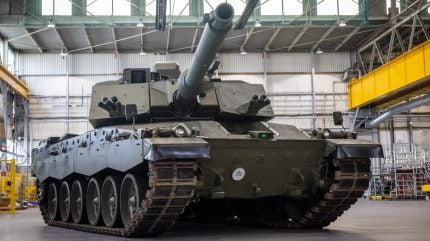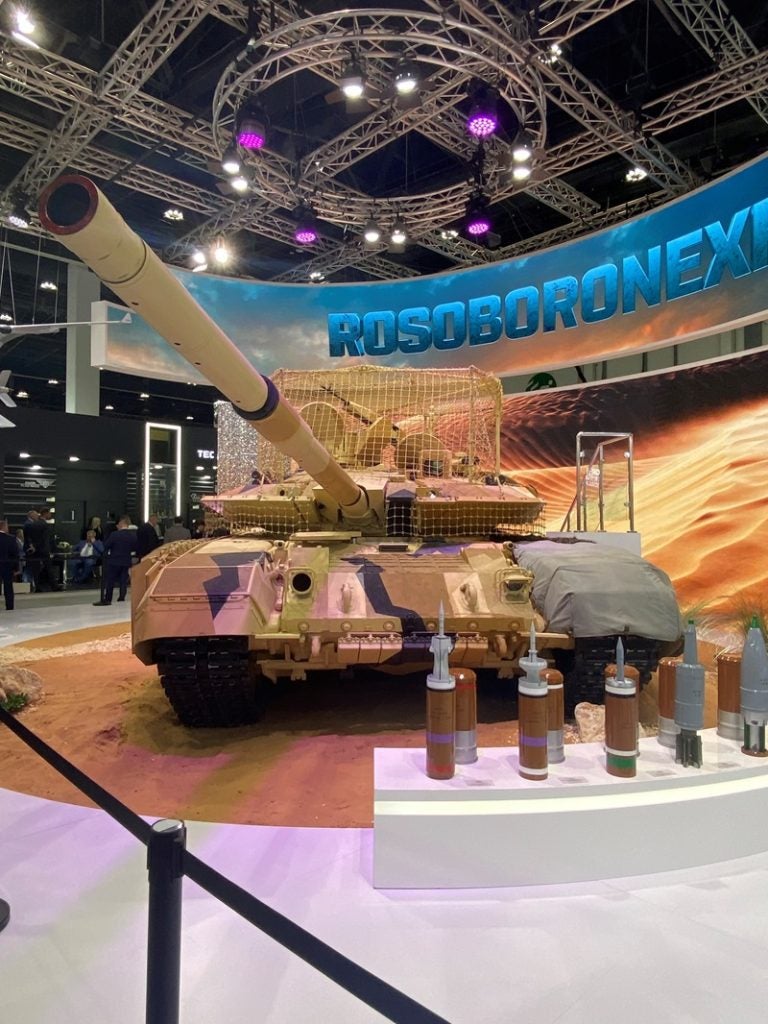Cook Defence Systems £125m deal to keep combat vehicles on track
Cook Defence Systems, a British military vehicle parts supplier based in the North East, has entered an agreement with the UK government to keep a steady supply of spare tracks in production for numerous armoured platforms.
The three-year deal, worth £125m ($168.7m), of which £5m will be invested in a new plant and machinery over the next 12 months, will keep various tracked armoured fighting vehicles (AFVs) – old and new, at home and in Ukraine – continually operational.

Discover B2B Marketing That Performs
Combine business intelligence and editorial excellence to reach engaged professionals across 36 leading media platforms.
Find out more

The agreement comes into effect on Ukraine’s Independence Day on 24 August 2025.
Cook tracks are in service on almost all armoured vehicles in the British Army and with many other allied forces. The supplier claims that its track systems can be fitted to any fighting vehicle.
Tracks for all vehicles
This new pool of spare tracks will support the British Army’s Challenger 3 main battle tank, the leading platform in its tracked vehicle fleet, due to enter service from 2027, but also legacy units on the Ukrainian frontline such as Scimitar, Stormer, and Viking vehicles.
Many of these legacy vehicles have found a new lease of life in Ukraine along with various armoured vehicles from among the transatlantic alliance. This includes the Leopard 1 and 2, Leclerc, M1 Abrams MBTs as well as the Shilka, M2 Bradley, and Gepard vehicles.
One drawback, of course, is that Ukrainian engineers have a hard time sustaining this mixed fleet. All of these vehicles have different parts and maintenance requirements which makes it difficult to tap into a complex web of supply chains to sustain these different vehicle types. And sourcing some parts might not be possible for some units at the end of their service life.
Many British-made AFVs are nearing their out-of-service dates. Maria Eagle, the UK Minister for Defence Procurement and Industry, listed the tracked vehicles approaching their end of life this decade: the Bulldog armoured personnel carrier in 2030, the Warrior infantry fighting vehicle in 2027, and the Viking pesonnel carrier in 2029.
In this backdrop, Cook is almost platform-agnostic; the British company is flexible since it can provide a steady and reliable supply of tracked systems.

Cook will even replenish other legacy MBTs such as Challenger 2 – one of which the Russians destroyed in 2023 – and, remarkably, a number of Soviet-era T-64s, T-72s, and T-80s which remain a significant part of Ukraine’s mechanised force structure. The UK indirectly financed Ukraine’s purchase of T-72s from Poland earlier this year.
Even now the vitality of the T-72, which goes back to 1973, still persists as the Russian state-owned defence company, Rostec, peddled an export variant of the T-90, a modernised rebrand of T-72, with anti-drone mesh, at the IDEX exhibition in Abu Dhabi earlier this year.

Sovereign sustainment
“Cook Defence Systems is critical to the operational independence of the British Army and allied forces,” noted the company director, William Cook.
The deal will rescue 125 jobs at the county Durham facility as part of the government’s mantra to turn ‘defence into an engine for growth’. But the company also supports more jobs in the regional supply chain and sources the majority of its steel from within the UK.
On this point, the UK government has simultaneously begun to protect domestic steel production after a controversy over a Chinese national security threat in April this year.
In addition, given the attrition rate of military mobility vehicles of all types in high intensity warfare, largely threatened by the omnipresent threat of uncrewed aerial systems, the UK and Ukraine need to be able to replace losses at a moment’s notice. Often, MBTs will be hidden in foliage, free from the threat of low-cost loitering munitions, rather than operate in open spaces.
In this backdrop, the sovereign supply of parts and systems is now in vogue across Europe, with many defence organisations seeking to untangle from their deep-seated links with the US defence industry.

